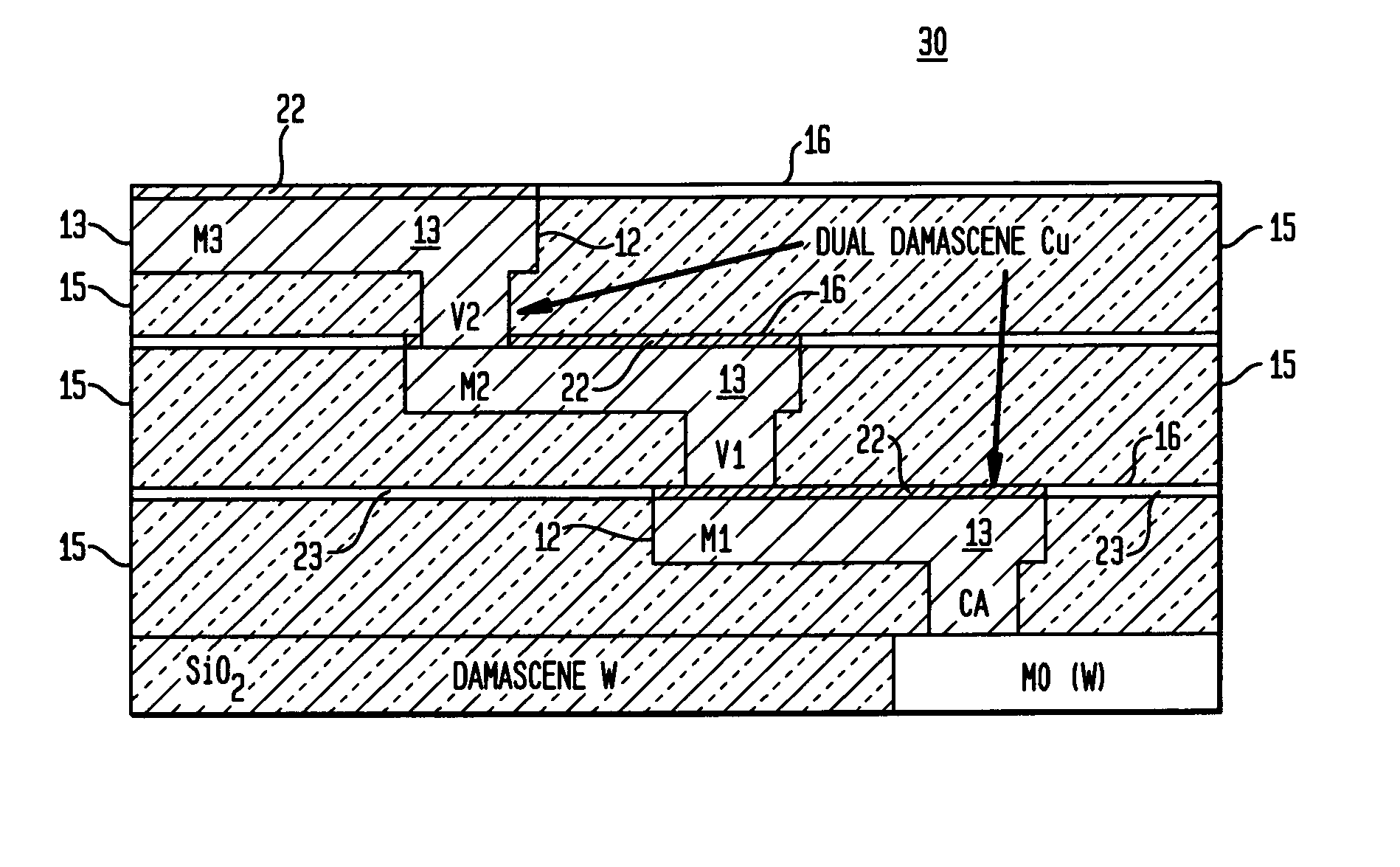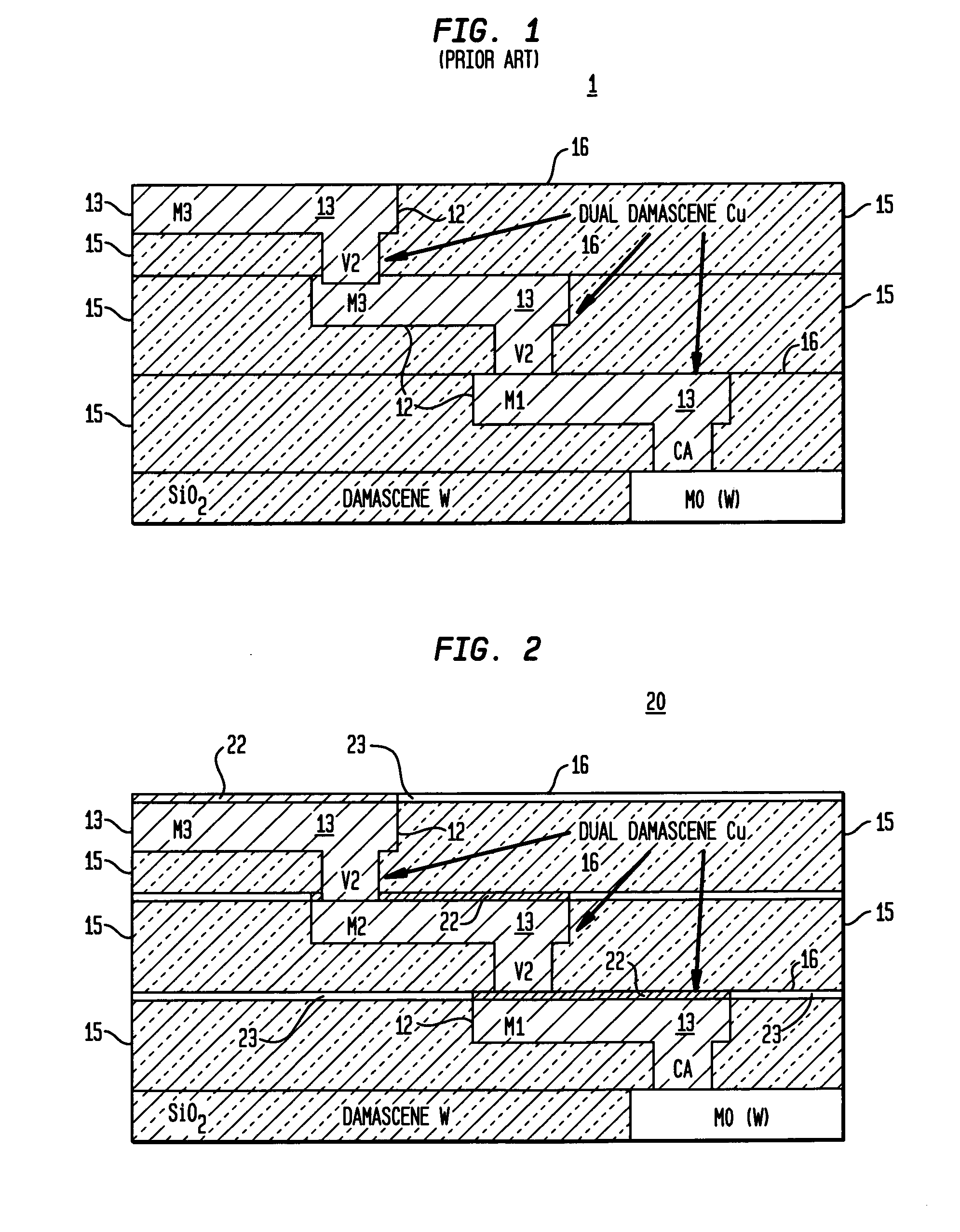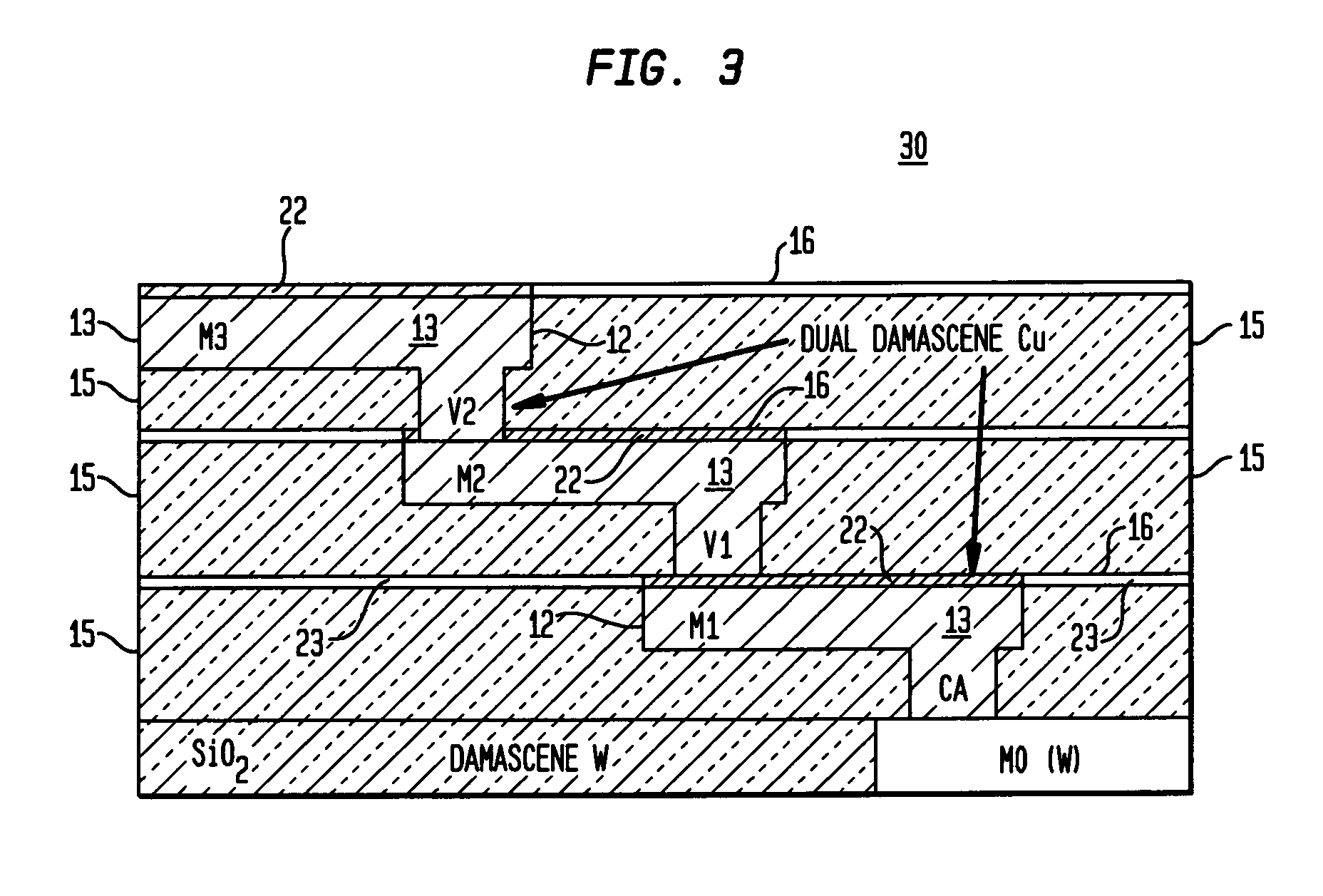On-chip Cu interconnection using 1 to 5 nm thick metal cap
a technology of cu interconnection and metal cap, which is applied in the direction of semiconductor devices, semiconductor/solid-state device details, electrical apparatus, etc., can solve the problems of increasing the lifetime of the circuit, unable to disclose the use of cu interconnection, and atom flux fluctuations, etc., to improve electromigration and corrosion resistance, reduce stress induced voiding, and enhance adhesion
- Summary
- Abstract
- Description
- Claims
- Application Information
AI Technical Summary
Benefits of technology
Problems solved by technology
Method used
Image
Examples
Embodiment Construction
[0019] A schematic of a cross-sectional view of conventional Cu interconnections is shown in FIG. 1. The electronic structure 1 contains a typical three-level Cu dual-damascene interconnection. The adhesion / diffusion metal liner (e.g. TaN / Ta, TaTi) 12 and a body of Cu conductor 13, insulator (SiO2, low dielectric constant materials) 15 and adhesion / diffusion insulator layer (e.g. SiNx) 16 which are the fundamental layers for the damascene structure are shown. The local interconnection W M0 is connected to the first level Cu lines M1 by the inter-level vias CA. The second level Cu M2 line are connected to M1 and the third level Cu line M3 by V1 and V2 vias, respectively, embedded within the under layer dielectric without causing an electric short circuit between the Cu lines.
[0020] The subjects of electromigration, stress-induced migration, corrosion and adhesion in on-chip Cu interconnections are all related to the properties of the top surface of the Cu damascene lines. The fast C...
PUM
| Property | Measurement | Unit |
|---|---|---|
| thickness | aaaaa | aaaaa |
| temperature | aaaaa | aaaaa |
| temperature | aaaaa | aaaaa |
Abstract
Description
Claims
Application Information
 Login to View More
Login to View More - R&D
- Intellectual Property
- Life Sciences
- Materials
- Tech Scout
- Unparalleled Data Quality
- Higher Quality Content
- 60% Fewer Hallucinations
Browse by: Latest US Patents, China's latest patents, Technical Efficacy Thesaurus, Application Domain, Technology Topic, Popular Technical Reports.
© 2025 PatSnap. All rights reserved.Legal|Privacy policy|Modern Slavery Act Transparency Statement|Sitemap|About US| Contact US: help@patsnap.com



